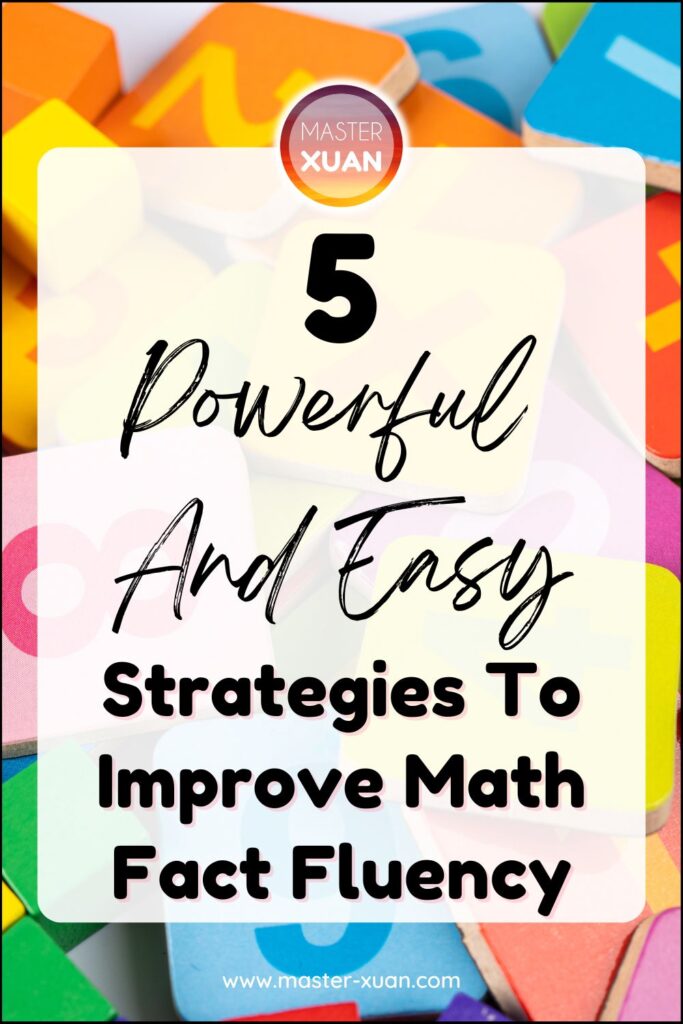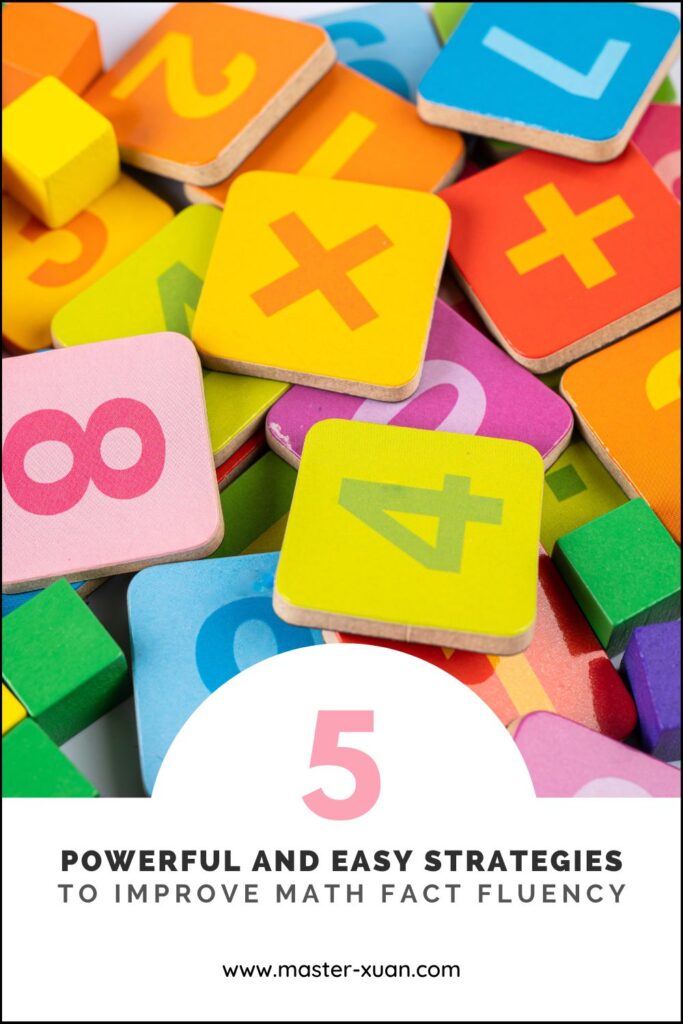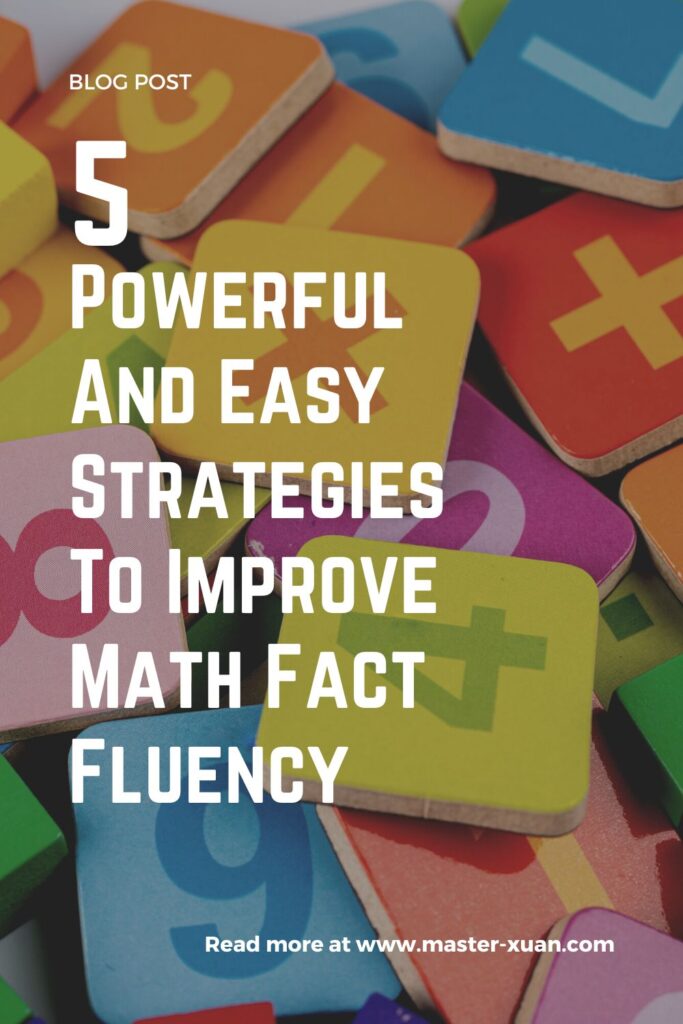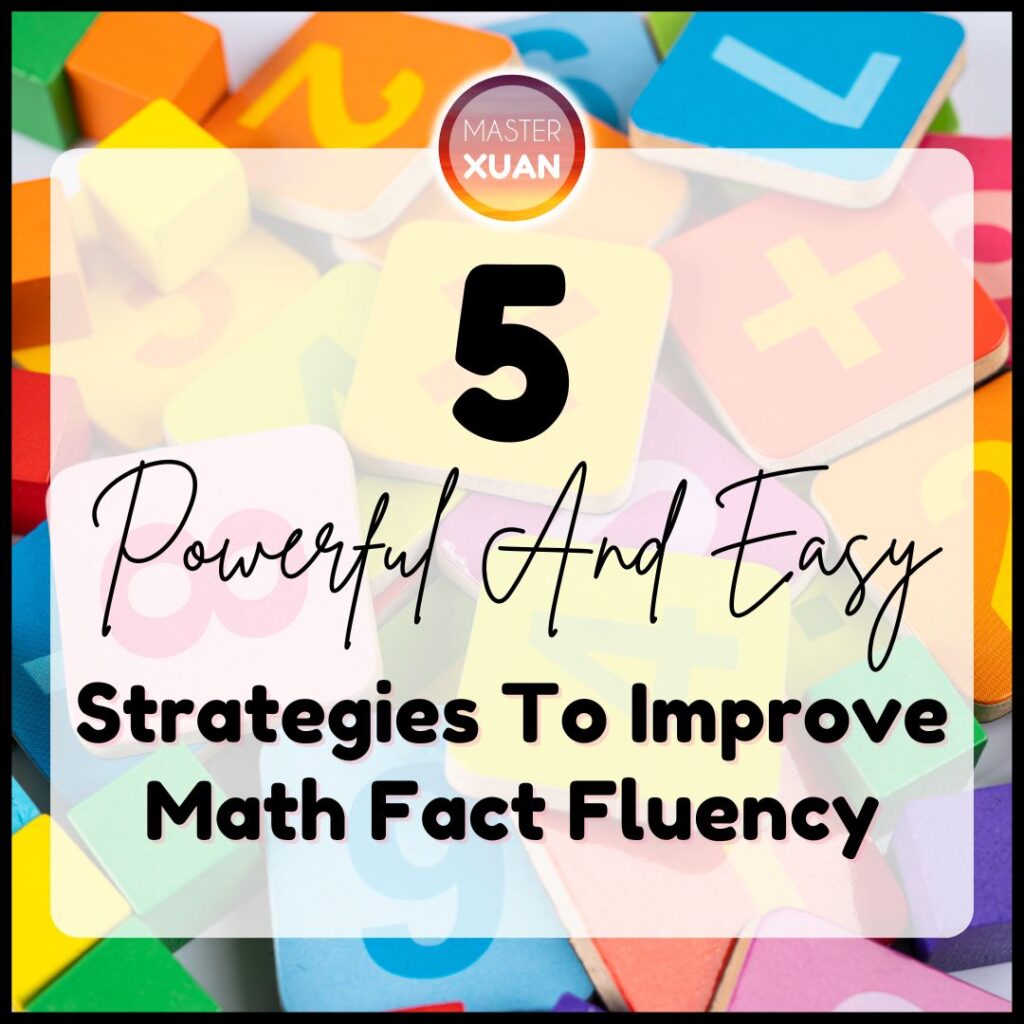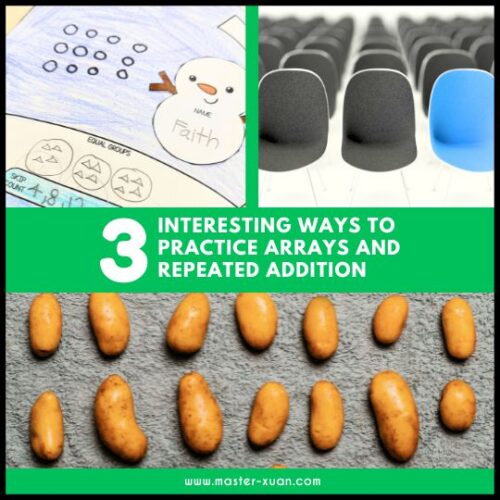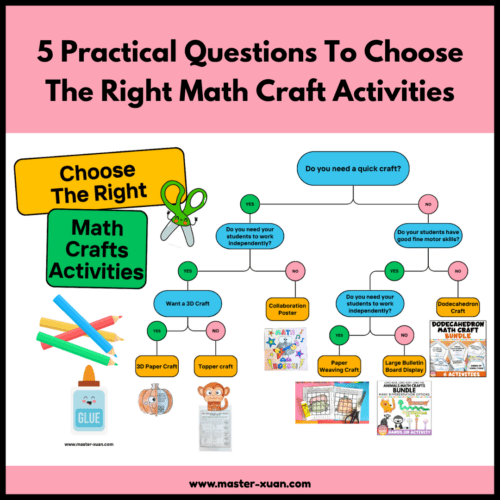Are you looking for strategies to improve math fact fluency? Then continue to read on!
Today I am sharing some ideas and resources to practice math facts so your students can develop fact fluency more quickly.
But before we jump into the strategies, let us get our definitions straight so we are on the same page.
What is math fact?
Math facts are defined as calculations of single digits (0 – 9) using the four basic math operations: addition, subtraction, multiplication, and division.
These are the basic math skills that elementary school students should possess.
What is math fact fluency?
It is the ability to recall the solution to basic math facts accurately, quickly, and effortlessly. This means that coming up with the answers becomes automatic and without much thought.
Why is math fact fluency important?
Firstly, it develops number sense (the ability to understand, relate, and connect numbers).
Secondly, students can understand complex math concepts easier and faster. When students mastered their math facts, students can use their working memory on higher-order mathematical learning instead.
Thirdly, it reduces math anxiety. With solid math fact fluency and knowing how to use efficient strategies, students will struggle less with math and thus feel more confident with the subject.
Fourthly, it is necessary for great results in lower grades. Students learn these foundation skills when they first started learning math.
So if there are any tests, most likely they will be about math facts.
Hence, mastering math facts fluency usually means they will score well on their tests (and eventually math education).
Lastly, and maybe the most important one, it is useful and practical for daily life. We use them in the real world and it will be an essential skill that we use even after we stop learning academic math.
However, gaining math fact fluency takes time and may develop at different rates for different children. So it is no wonder that you came searching, trying to find strategies to improve math fact fluency.
I know it can be hard to find time and the right resources to practice this foundational skill. So I also add some recommended resources so you can just grab them and use them in your classroom.
Below are my five powerful and easy strategies for building math fluency with primary students.
Strategy 1: Improve Math Fluency with Repetitive Practice
Keep repeating and…repeating…and repeating! Well, you get what I mean.
We all know that the more (correct) practice students do, the quicker it is to transfer these facts from short-term to long-term memory.
We all went through experiences whereby after teaching a math skill children seem to understand it and are able to complete the corresponding activities.
But, after a few days, they seem to get memory loss and require you to reteach again.
Thus proving that cramming doesn’t help in the long (or even short) run.
Instead, we should space learning activities out over time. This is known as spaced practice or distributed practice.
So give daily opportunities for math fact practice and make math facts part of everyday mathematics. It will help them develop math fluency over time.
Strategy 2: Improve Math Fluency By Using A Variety Of Strategies
It is beneficial to teach a variety of strategies to solve basic facts. Fluency should not just require rote memorization (for example memorizing the multiplication table). Instead, students should have a conceptual understanding of basic fact fluency through various fluency activities.
In addition, different students may favor different strategies. Giving students more choices increases the chance of finding the one that works for them. For example, some students prefer doing subtraction by counting backward while others prefer using addition. Differentiation is important.
Furthermore, teaching students all of the strategies and exposing them to different math problems helps them to have a deeper math understanding.
Using a variety of methods to solve a question can also reinforce math skills. For example, you can teach children to count using their fingers and manipulatives, draw out pictures, write equations, and use mental math. Give students many opportunities to experience math in different ways!
Eventually, we will want to teach mental math strategies. When students are able to solve the facts mentally using mental strategies, it demonstrates math fluency. So practice mental math as often as possible so that students can achieve math fact automaticity in their elementary years.
After talking about the variety of strategies used to solve questions, now we will share more about the variety of ways to teach.
We should also vary how we teach for the same reasons mentioned above. Changing how we teach not only makes the repetition less boring but also helps create more memory connections with the math facts!
Check out these related reads for more ideas:
5 Hooks For Math Lessons That Will Engage Your Students Easily & Quickly
Primary Math Teaching Strategy For Teachers: 15 Easy And Practical Tips
Strategy 3: Improve Math Fluency by Layering Skills
A great thing about math facts is we are learning connected skills. And by making connections between numbers and operations, we are also revising the previously taught skills.
For example, when we are teaching subtraction and multiplication, we will utilize addition facts. Similarly, when we are teaching division, we will make use of subtraction facts. In the end, we will build on new skills based on previous math skills.
You don’t have to wait till your students “mastered” the facts before moving on, just ensure students get sufficient practice for each skill. The chances are low that the whole class mastered the facts. Remember, math fluency takes time.
For example, students may not completely master addition facts but by making the connection when teaching other facts, they will gain more “experience points” on the way.
From my own personal experience, I feel that my multiplication skills improved when I learned long multiplication, long division, fractions, etc. Cause all of these require me to constantly practice multiplication facts.
This is similar to using the interleaving approach, a learning technique that involves mixing different topics. Basically, it forces students to actively recall the correct strategies to use.
One way of using the interleaving approach is for students to do math facts worksheets with both addition and subtraction problems. Or make students determine which facts to use for a word problem.
If you really need more practice with the prior knowledge but need to move on, then show the connection and keep using them!
Strategy 4: Improve Math Fluency by Using Self-Checking Resources
One strategy to improve math fluency is to use self-checking tools. These tools allow students to realize they make a mistake and find the correct answer as soon as possible.
This is very important for 2 reasons.
First, it allows them to focus on the next step without getting stuck on a mistake.
Second, CORRECT practice makes perfect! It helps a learner deepen their understanding when their mistakes are corrected the moment it arises.
Self-checking resources that require students to find the error themselves can encourage independent learning.
Here’s an example:
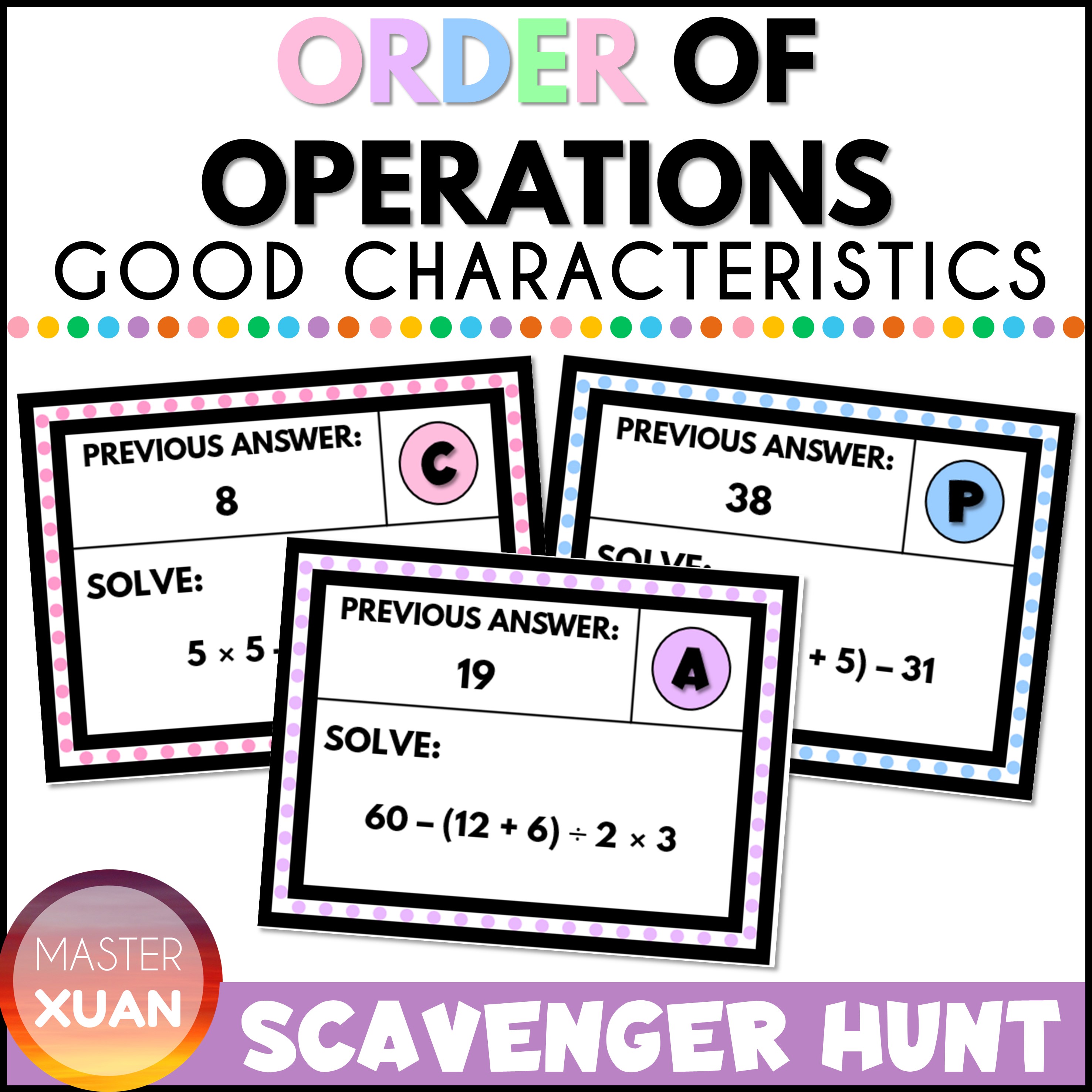
On the other hand, using digital tools that help students receive instant feedback can make learning more efficient. Plus, it saves everyone so much time from marking them.
The digital task cards from Boom Learning are self-grading and are great assessment tools.
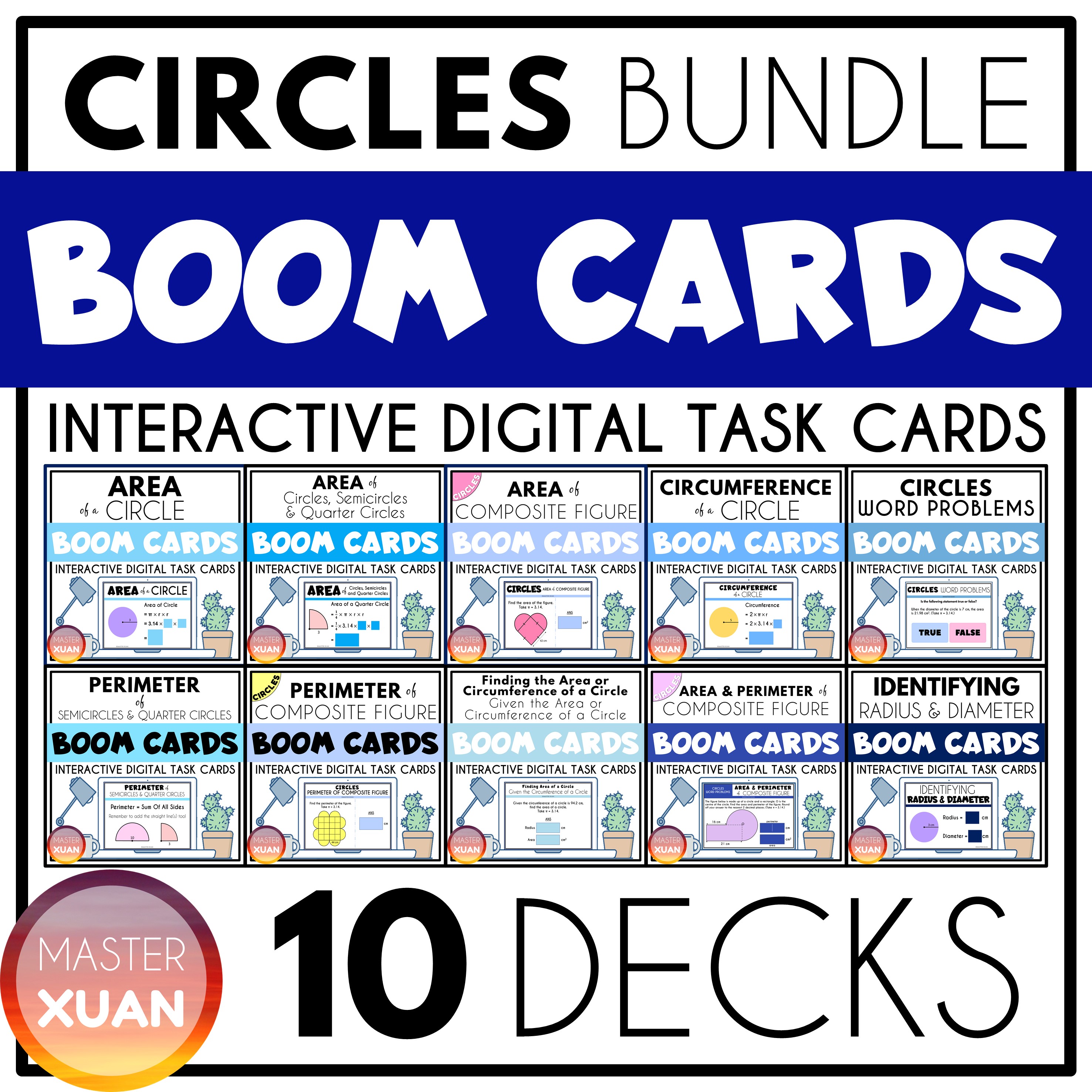
They are great for independent work, small group, homework, and math centers. Do check them out in my Boom Learning Store!
Strategy 5: Improve Math Fluency by Making Lessons Fun & Engaging
Learning math facts can sometimes be tedious with so many repetitions. Thus, making lessons fun and engaging is so important when learning these skills.
One of the best ways is to play fun math fact games. It can be printable or digital, depending on your needs.
But if you want to play as a class or small group, reviewing math facts with game quiz show is a good idea.
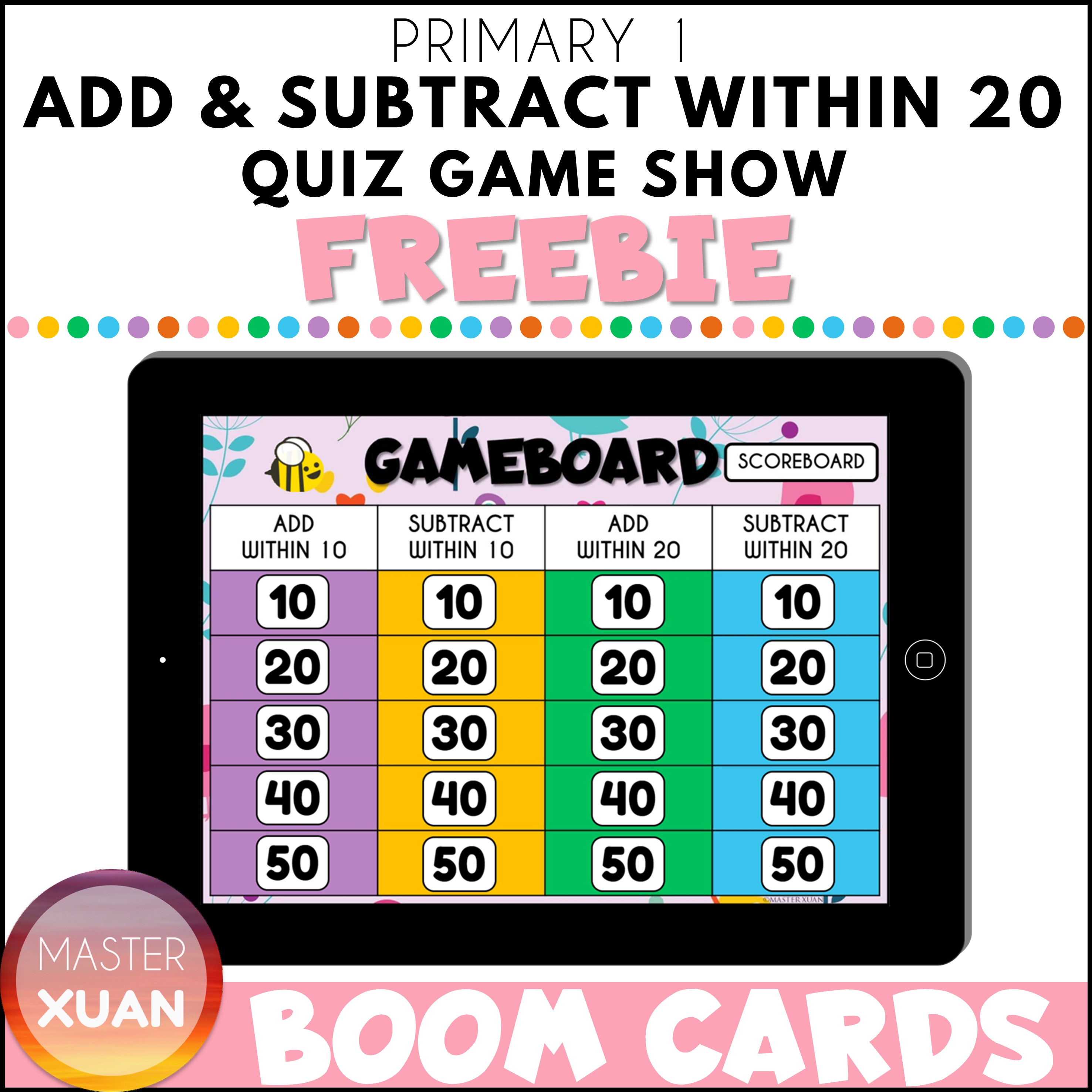
To practice division math facts, play this.


Check out this post for more fun games: 10 Interesting Online Multiplication Games That My Students Found Fun
Other than games, consider hands-on activities, crafts, STEM activities, presentations, puzzles or just using manipulatives. There are many ways to have fun and engage your students.
Add them to your lesson plan to make learning math facts enjoyable today!
Final Thoughts
Here are the 5 strategies to improve math fact fluency:
- Improve Math Fluency with Repetitive Practice
- Improve Math Fluency By Using A Variety Of Strategies
- Improve Math Fluency by Layering Skills
- Improve Math Fluency by Using Self-Checking Resources
- Improve Math Fluency by Making Lessons Fun & Engaging
Basically, you need to accept that the learning process will be long but is essential for future success in mathematics education. We need to do our best to support students and give frequent opportunities for them to practice these fundamental skills.
Varying how students practice will make math lessons more interesting. You can use flash cards, visual representation (i.e. number line), games (i.e. using bingo board), or activities.
Be intentional in teaching prior knowledge to reinforce the foundational skills.
And use self-grading resources so that students get instant feedback without requiring your help in checking the answers to the drills. Your time can be better spent in explaining the concepts or managing the class.
Lastly, remember, the fun way always works for elementary students.
Enjoy teaching so your students enjoy learning too.
So, if you have a hard time finding the perfect resource, do drop me an email.
While I can’t promise future creations, I will try my best to create something that fits your need. So let’s chat more about the details of creating your dream resource (elementary math) today!
Here are some pins that you can save to bookmark this post (5 Powerful And Easy Strategies To Improve Math Fact Fluency). Save them to your Pinterest Board now! ↓
